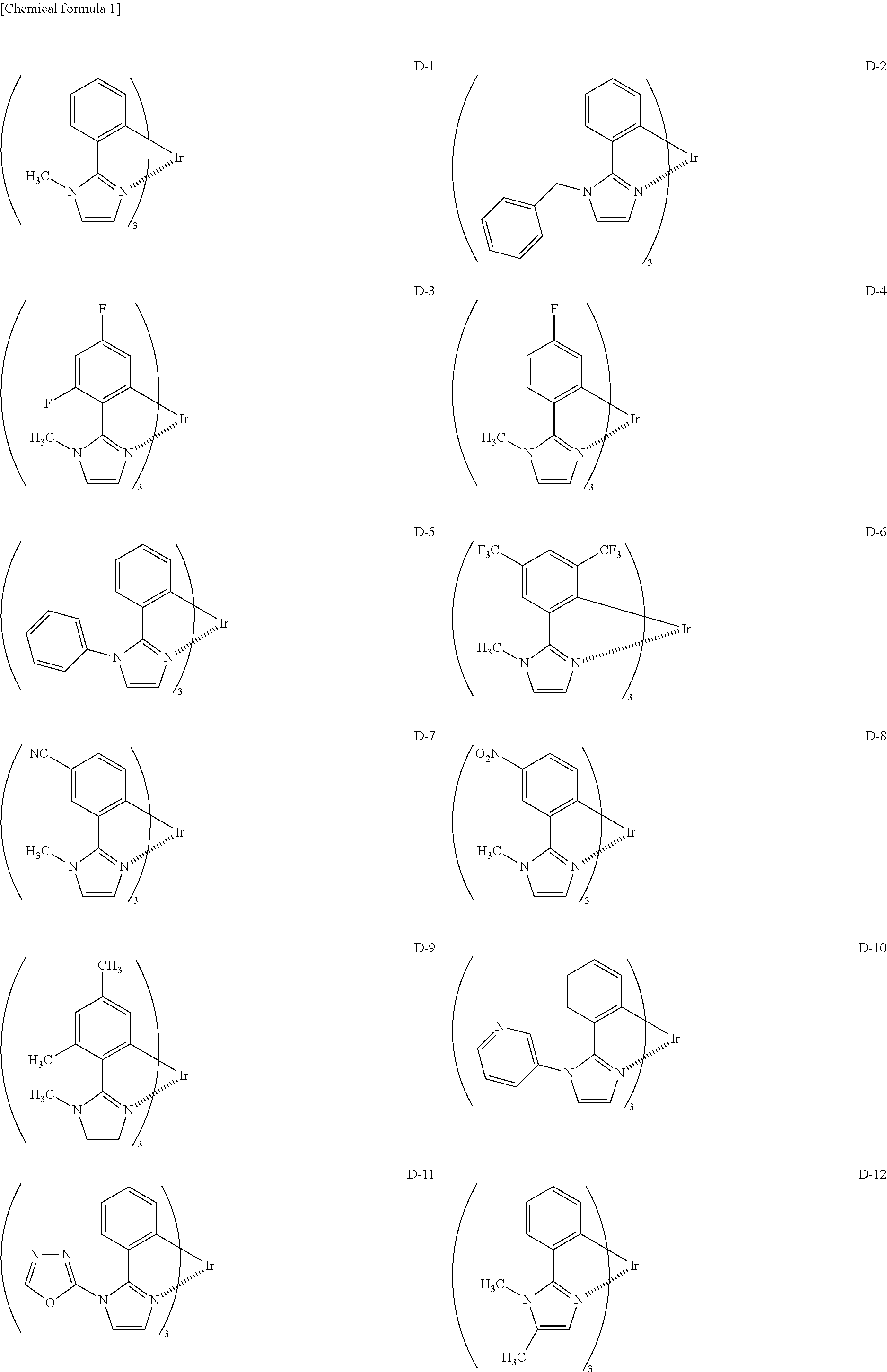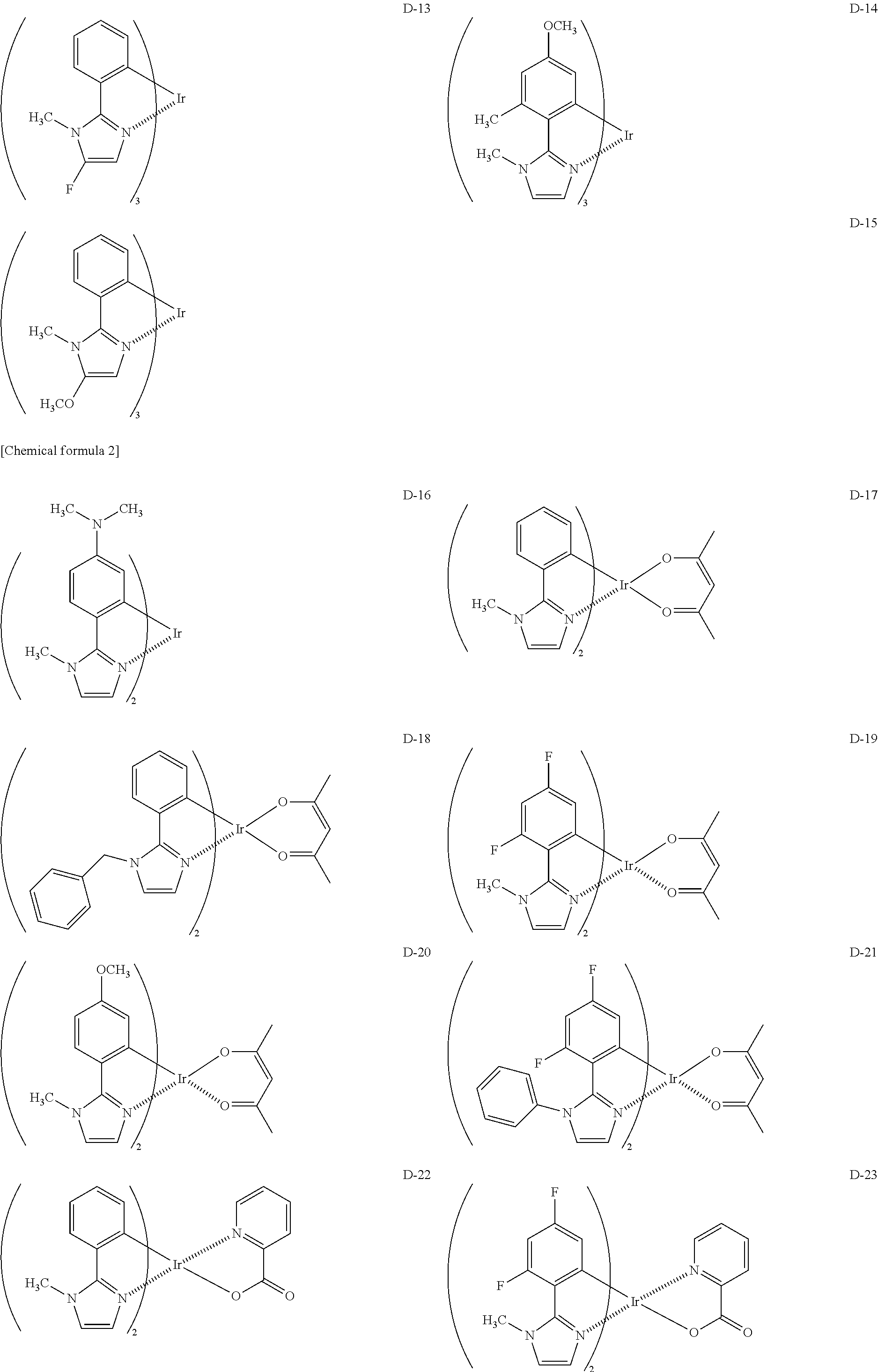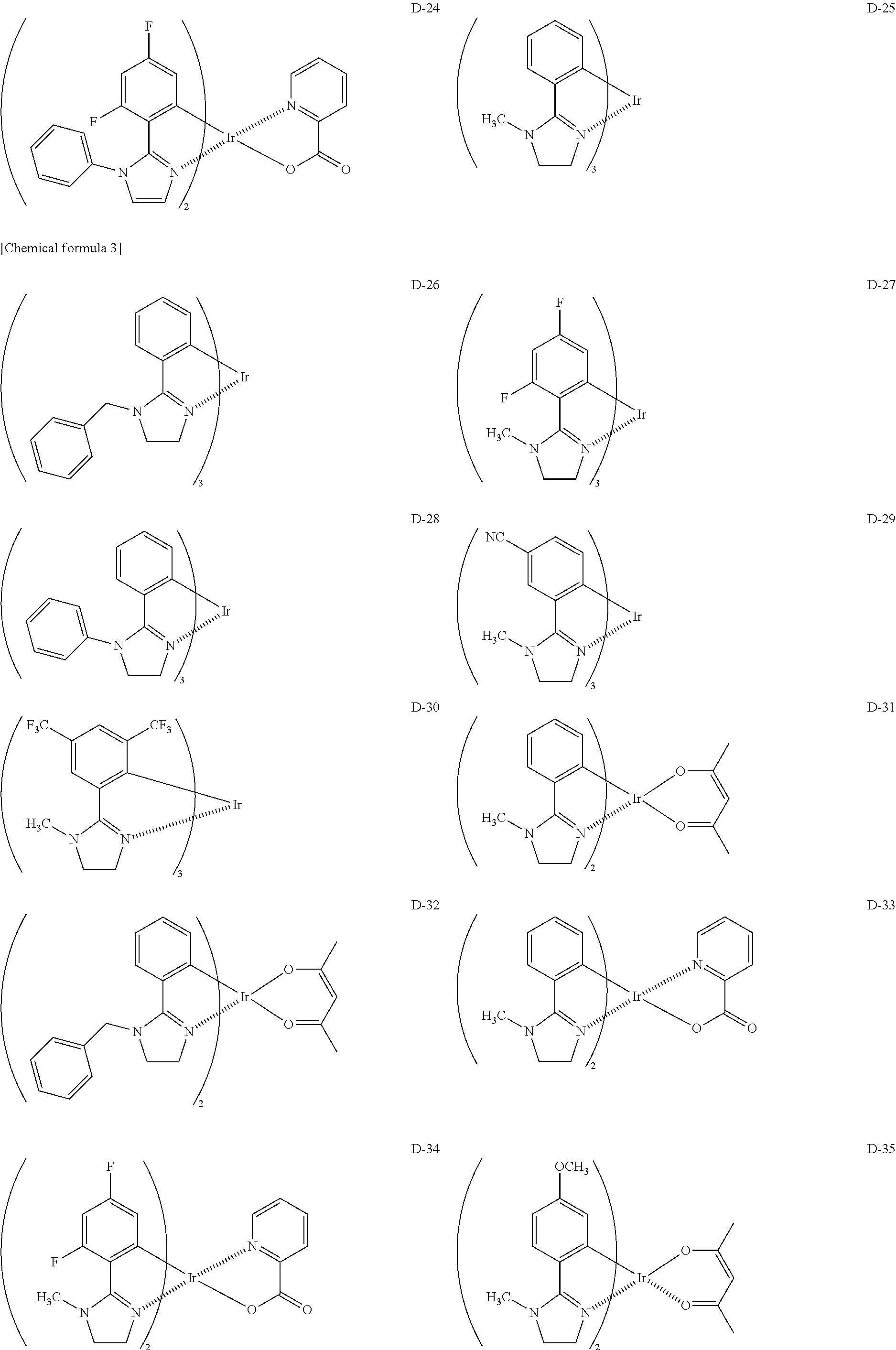Method for manufacturing organic electroluminescent element, and organic electroluminescent element
- Summary
- Abstract
- Description
- Claims
- Application Information
AI Technical Summary
Benefits of technology
Problems solved by technology
Method used
Image
Examples
example 1
Preparation of Organic EL Element
[0143][Preparation of Sample No. 101]
[0144](1: Preparation of Flexible Gas Barrier Film)
[0145]As a flexible film, polyethylene naphthalate film (manufactured by Teij in DuPont Films Japan Limited, hereinafter abbreviated as PEN) was used. On the entire surface of the side on which an anode was to be provided, a 500 nm-thick gas barrier film of an inorganic compound composed of SiOx was formed without intermission using an atmospheric pressure plasma discharge processor configured as described in Japanese Patent Application Laid-open Publication No. 2004-68143. A flexible gas barrier film having an oxygen transmission rate of 0.001 ml / m2 / day or less and a moisture vapor transmission rate of 0.001 g / m2 / dam2 / day or less was thus prepared.
[0146](2: Formation of Anode)
[0147]On the prepared flexible gas barrier film, a film having a thickness of 120 nm was formed with ITO (indium tin oxide) by sputtering followed by patterning by photolithography. An anode...
example 2
Preparation of Organic EL Element
[0194][Preparation of Samples No. 201 to 211]
[0195]Samples No. 201 to 211 were prepared by the same way as the sample No. 106 described in Example 1 except that an oxygen concentration and moisture concentration in atmosphere for preparing the liquid for the light-emitting layer were changed and the application of ultrasonic energy after putting the liquid into a syringe was conducted or not conducted as shown in Table 2.
[0196]>
[0197]Each of the above prepared samples No. 201 to 211 and the sample No. 106 prepared in Example 1 was evaluated for state of the applied surface, efficiency of light emission, driving voltage and lifetime of the element by the same ways as described in Example 1. Results obtained are shown in Table 2.
TABLE 2Application stepEvaluation ResultsOxygenMoistureUltrasonicState ofEfficiencySampleconcentrationconcentrationenergyappliedof lightDrivingNo.(ppm)(ppm)applicationsurfaceemissionvoltageLifetime10610 or less10 or lessdone498...
example 3
Preparation of Organic EL Element
[0199][Preparation of Sample No. 301]
[0200]A sample No. 301 was prepared by the same way as the sample No. 101 was prepared except that a time period until 90% or more of toluene as the solvent was removed after the application of the application liquid for the light-emitting layer in forming the light-emitting layer was 4.5 seconds.
[0201][Preparation of Samples No. 302 to 307]
[0202]Samples No. 302 to 307 were prepared by the same way as the sample No. 301 was prepared except that a condition for the drying right after applying the application liquid for the light-emitting layer (whether heating was conducted or not and how long heating was conducted) was changed as shown in Table 3. Specifically, a condition for heating right after the application was controlled to adjust a time period until 90% or more of toluene as the solvent was removed from the applied layer from the simultaneous start of the application of the light-emitting layer and the heat...
PUM
 Login to view more
Login to view more Abstract
Description
Claims
Application Information
 Login to view more
Login to view more - R&D Engineer
- R&D Manager
- IP Professional
- Industry Leading Data Capabilities
- Powerful AI technology
- Patent DNA Extraction
Browse by: Latest US Patents, China's latest patents, Technical Efficacy Thesaurus, Application Domain, Technology Topic.
© 2024 PatSnap. All rights reserved.Legal|Privacy policy|Modern Slavery Act Transparency Statement|Sitemap



